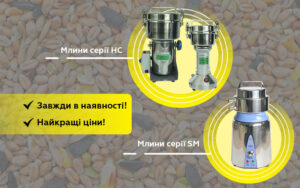RCS Echo Review: Navigating the Pathophysiology and Diagnosis Questions
The Registered Cardiovascular Sonographer (RCS) Echo exam is one of the most significant certifications for professionals working in cardiovascular imaging. It tests a comprehensive range of skills and knowledge, but one of the most challenging aspects for many candidates is the pathophysiology and diagnosis questions. These questions require not only technical understanding but also the ability to interpret complex clinical information. For those preparing for the RCS Echo exam, mastering this section is crucial to achieving success.
In this blog, we will dive into strategies for navigating the pathophysiology and diagnosis questions of the RCS Echo exam, explore how to effectively use RCS Echo review materials, and discuss how practicing with tools like ARDMS Echo practice questions can help reinforce your knowledge. Whether you’re a seasoned professional or new to the field of cardiovascular sonography, this guide will provide insights to improve your exam performance.
Understanding the Pathophysiology and Diagnosis Section of the RCS Echo Exam
The RCS Echo exam evaluates a sonographer’s ability to assess the heart using echocardiography, including understanding the pathophysiology (the study of how diseases affect the function of the heart) and the diagnostic implications of the findings. The pathophysiology and diagnosis questions on the RCS Echo exam typically cover conditions such as heart failure, valvular diseases, congenital heart defects, and cardiomyopathies, among others.
These questions require an understanding of how specific conditions impact the heart’s structure and function, and how echocardiographic imaging can help diagnose and assess the severity of these conditions. It’s crucial to be familiar with the clinical presentations, diagnostic criteria, and treatment implications of various cardiovascular diseases.
For many candidates, these types of questions are among the most challenging because they require the ability to integrate multiple facets of cardiac anatomy, physiology, and pathology. It’s not just about memorizing the definitions of diseases; it’s about understanding how diseases affect the heart and how echocardiography can provide key diagnostic insights.
RCS Echo Review: Focusing on Key Pathophysiological Concepts
A thorough RCS Echo review must emphasize the pathophysiology of cardiovascular conditions. To succeed on the exam, you need to be comfortable with a variety of pathologies that are frequently assessed in clinical practice. Let’s break down the essential pathophysiological concepts that you need to understand:
1. Heart Failure (HF)
Heart failure is one of the most common conditions assessed in the RCS Echo review. It occurs when the heart is unable to pump blood effectively, leading to insufficient circulation to meet the body’s demands. There are two main types of heart failure: systolic heart failure (reduced ejection fraction) and diastolic heart failure (preserved ejection fraction). Understanding the key echocardiographic signs of heart failure is essential for diagnosis.
- Systolic Heart Failure: This is characterized by a reduced ejection fraction (EF), typically less than 40%. Echocardiography can reveal dilated chambers, decreased wall motion, and impaired left ventricular function.
- Diastolic Heart Failure: This occurs when the heart’s ability to relax and fill with blood is impaired, often due to stiffness of the heart muscle. Key echocardiographic findings include abnormal diastolic filling patterns and thickened ventricular walls.
2. Valvular Heart Diseases
Valvular diseases are also frequently examined in the RCS Echo exam. These include mitral valve regurgitation, aortic stenosis, tricuspid regurgitation, and aortic regurgitation, among others. Each condition alters the flow of blood through the heart, leading to different echocardiographic patterns.
For example, aortic stenosis results in a thickened aortic valve, with decreased valve motion, and mitral valve regurgitation is often seen as backflow through the mitral valve during systole. Understanding these pathologies and recognizing their echocardiographic signatures is critical for accurate diagnosis.
3. Cardiomyopathies
Cardiomyopathies, such as dilated, hypertrophic, and restrictive types, involve abnormal heart muscle structure and function. Dilated cardiomyopathy leads to enlarged chambers and decreased heart contractility, while hypertrophic cardiomyopathy results in thickened heart walls. Restrictive cardiomyopathy causes the heart to become stiff and less able to fill with blood.
Each of these conditions has distinct echocardiographic findings, including wall motion abnormalities, chamber size alterations, and changes in the diastolic filling pattern. Understanding these pathologies and their echocardiographic presentations will be key in navigating the diagnosis section of the exam.
4. Congenital Heart Defects
Congenital heart defects, such as atrial septal defects (ASD), ventricular septal defects (VSD), and patent ductus arteriosus (PDA), also make up a large portion of the RCS Echo exam’s pathophysiology questions. These defects alter normal heart function and require specific imaging techniques for diagnosis.
For instance, in ASD, a hole in the atrial septum can lead to abnormal blood flow between the left and right atria, which can be visualized via Doppler imaging. Recognizing these abnormalities is crucial for both diagnosis and management.
The Role of RCS Echo Review Materials in Your Preparation
To adequately prepare for the pathophysiology and diagnosis questions on the RCS Echo exam, using high-quality review materials is essential. RCS Echo review resources should include a mix of theoretical knowledge, clinical case studies, and practice questions that challenge your understanding of complex cardiovascular conditions.
- Case-Based Practice: Many RCS Echo review materials, like those offered by Ocean Ultrasound, include case-based practice questions. These scenarios simulate real-world situations and test your ability to apply your knowledge of pathophysiology to interpret echocardiographic findings.
- Visual Aids: Diagrams, echocardiographic images, and videos are invaluable for learning. Visualizing the heart’s anatomy and pathology through actual echocardiograms can significantly improve your diagnostic skills. Ocean Ultrasound provides plenty of resources that include high-quality imaging examples, helping you familiarize yourself with the types of images you’ll encounter on the exam.
- Detailed Explanations: While practice questions are crucial, it’s equally important to understand the reasoning behind each answer. A good RCS Echo review resource provides in-depth explanations of why certain echocardiographic findings indicate a specific diagnosis, helping you learn from your mistakes and reinforce key concepts.
- Doppler Interpretation: Many pathophysiological conditions, such as valvular diseases and heart failure, require Doppler echocardiography for assessment. Understanding how to interpret Doppler waveforms is essential. Review materials should include sections specifically dedicated to Doppler principles and interpretation.
How ARDMS Echo Practice Questions Can Complement Your RCS Echo Review
While ARDMS Echo practice questions are geared toward the ARDMS exams, many of the questions focus on similar concepts found in the RCS Echo review. These questions can help you sharpen your skills in identifying pathologies and interpreting echocardiographic findings.
The benefit of using ARDMS Echo practice questions in your preparation is the exposure to a wide range of question styles and formats, which can help you become more comfortable with the exam’s structure. Practicing with these questions will also help you improve your time management skills, as you learn to answer questions quickly and accurately under exam conditions.
Both ARDMS Echo practice questions and RCS Echo review materials can be used in tandem to maximize your preparation. Start with RCS Echo review to gain a strong foundation in the pathophysiology and diagnosis of cardiovascular conditions, then reinforce that knowledge with practice questions to solidify your understanding.
Final Tips for Navigating Pathophysiology and Diagnosis Questions
Here are some additional tips to help you tackle the pathophysiology and diagnosis questions on the RCS Echo exam:
- Know the Key Disease Mechanisms: Understanding how diseases like heart failure, valvular conditions, and cardiomyopathies affect the heart’s structure and function is crucial. Focus on the mechanisms that drive the pathologies and how they manifest in echocardiographic images.
- Practice with Timed Sessions: Time yourself when practicing with RCS Echo review questions to simulate actual exam conditions. This will help you learn to pace yourself and become more comfortable with the timing pressure on exam day.
- Review Echocardiographic Imaging Techniques: Familiarize yourself with different echocardiographic techniques, including M-mode, 2D, 3D, and Doppler. Understanding the strengths and weaknesses of each technique will help you interpret the images more effectively.
- Stay Updated on Guidelines: Clinical guidelines for cardiovascular diseases can change, so it’s important to stay current on the latest practices and recommendations for diagnosis and management.
Mastering the Pathophysiology and Diagnosis Questions
Successfully navigating the pathophysiology and diagnosis questions on the RCS Echo exam requires a deep understanding of cardiovascular conditions, diagnostic imaging techniques, and clinical decision-making. By focusing on key pathophysiological concepts, using high-quality RCS Echo review materials, and reinforcing your knowledge with ARDMS Echo practice questions, you can boost your chances of success.
With the right resources, including the practice questions and review materials offered by Ocean Ultrasound, you’ll be well-equipped to tackle the most challenging sections of the RCS Echo exam and advance your career as a certified cardiovascular sonographer.














Post Comment